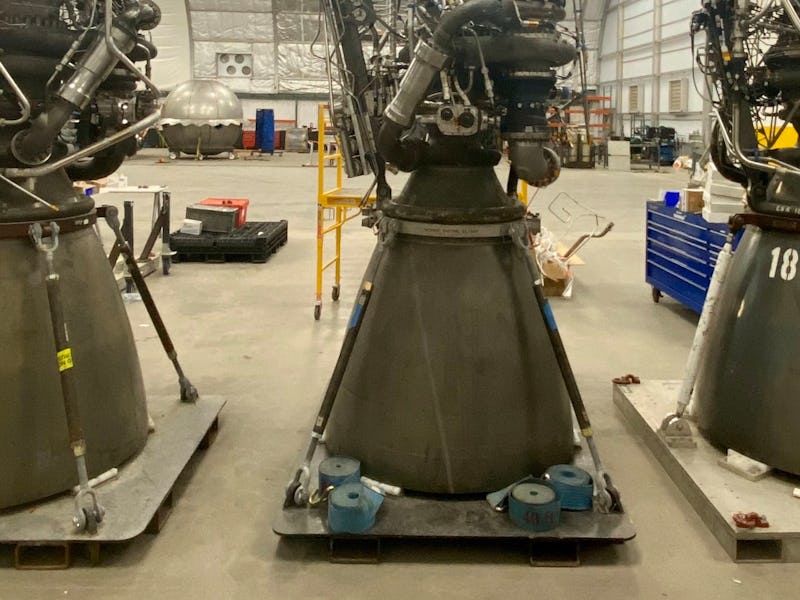SpaceX Raptor: Elon Musk’s photo sparks ‘Jurassic Park’ comparison
The company's Raptor engines are designed to power the first manned missions to Mars.

SpaceX's futuristic rocket engines are transforming rapidly.
On Sunday, CEO Elon Musk shared an image of three of the company's Raptor engines. These next-generation components are designed to support the Starship, a fully-reusable rocket designed to send humans to Mars and beyond. On his Twitter page, Musk explained that the design is "evolving rapidly."
The image comes as SpaceX continues work on its Starship project. After completing the first full-size prototype in September 2019, the team has been focused on producing more iterations of the ship at the Boca Chica facility in Texas. The Raptor will act as the heart of this new project: the Starship itself is expected to use six of them, while the Super Heavy booster that will lift the ship out of Earth's gravity can support up to 37 of them. That means each vehicle could in total use a staggering 43 engines.
Input: Tesla shows off ventilator prototype made of Model 3 parts
The SpaceX Falcon Heavy, which currently ranks as the world's most powerful operational rocket, uses just 27 Merlin engines across its three first-stage cores. In short, these engines are set to push a powerful rocket.
But Musk's new image demonstrates just how quickly these Raptor engines are changing. As a user called "alvianchoiri" noted, the new Raptors appeared to be missing a lot of the wiring from the engines that arrived at Boca Chica a while ago. Here is a previous image of the engines from September 2019:
Compare it with the most recent image, and it seems the engines have slimmed down:
Twitter user "Aaron_M_DeVries" produced a photo edit that showed Chris Pratt doing his famous Jurassic Park pose in front of the Raptor dinosaurs:
Considering the strength of the engines, it's an appropriate pose. The engine is expected to pack around double the thrust of its Merlon predecessor, reaching 380,000 pounds at sea level. In February 2019, the team beat a long-standing engine record by reaching 269 bar of chamber pressure, beating out the Russian-made RD-180 engine with 258 bar.
The engines are designed to support Starship's method of turning. Musk explained in September 2019 that an aircraft usually pivots by moving rudders and other components. With the Starship, the engines will pivot up to 15 degrees in their sea-level configuration while remaining stationary in their vacuum configurations.
Their fuel will also help enable some of SpaceX's more ambitious missions. The engines run on a combination of liquid oxygen and methane, as opposed to the rocket propellant used in Merlin engines. This means visitors to Mars could use the planet's natural resources to create more fuel and return home. The system also offers the option of venturing out further to other planets, creating a planet-hopping network where humans can explore the solar system.
SpaceX will need to produce a large number of Raptor engines to meet its goals. Musk has spoken before about the need to produce 1,000 Starships to achieve SpaceX's goal of building a city on Mars by 2050.
But before it can consider venturing out further than any manned spaceship ever, SpaceX will need to make its full-size Starship prototype complete a short hop.